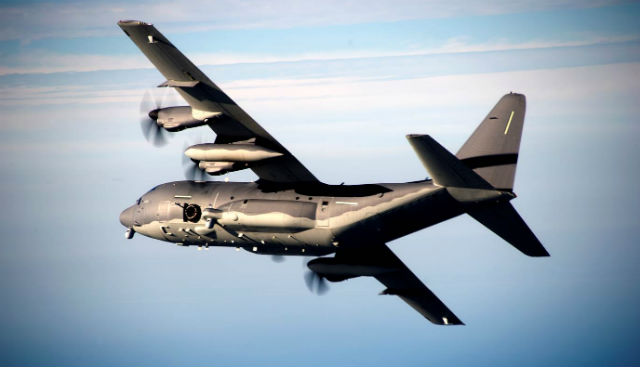The US Air Force’s Lockheed Martin AC-130J gunship is set to reach initial operational capability this month, Air Force Special Operations Command (AFSOC) chief Lt Gen Brad Webb confirms.
The AC-130J Ghostrider is still two years shy of combat, Webb said during the Air Force Association's annual Air, Space and Cyber conference outside Washington DC. AFSOC is developing the gunship by removing refuelling pods on the existing MC-130J and replacing them with weapons racks outfitted with precision strike packages. The Block 10 AC-130J configuration includes an internal 30mm gun, GPS-guided small diameter bombs and laser-guided missiles that will launch from the rear cargo door.

US Air Force
Last July, the USAF received the first Block 20 configuration aircraft, which adds a 105mm cannon and large aircraft infrared countermeasures equipment. AFSOC is also planning to add wing-mounted Lockheed AGM-114 Hellfire air-to-surface missiles and radio-frequency countermeasures for its next round of updates.
A select number of AC-130Js will be outfitted with a high-energy laser, which the USAF could mount on the side in place of the 30mm gun. The laser gunship became the crown jewel of former AFSOC chief Lt Gen Bradley Heithold’s directed energy plan, with the commander once describing the concept as his “moon shot” ambition. Heithold’s successor has been less vocal on the programme, attributing his perceived apathy to an uncertain budget. Webb says he remains an enthusiastic supporter of the laser gunship demonstration, which is slated for 2020.
“It’s a little bit of a challenge from a priorities standpoint, which is why you hear me talk about it a little bit less, because I need to secure funding both from the air force and SOCOM [US Special Operations Command] to do it,” he says. “But right now we’re on the path to have this window – that is very necessary to be able to have the beam shoot out of – that will be installed on the plane and that happens in the next year. Then we go airborne with shooting the laser a couple years after that.”
Source: FlightGlobal.com
















